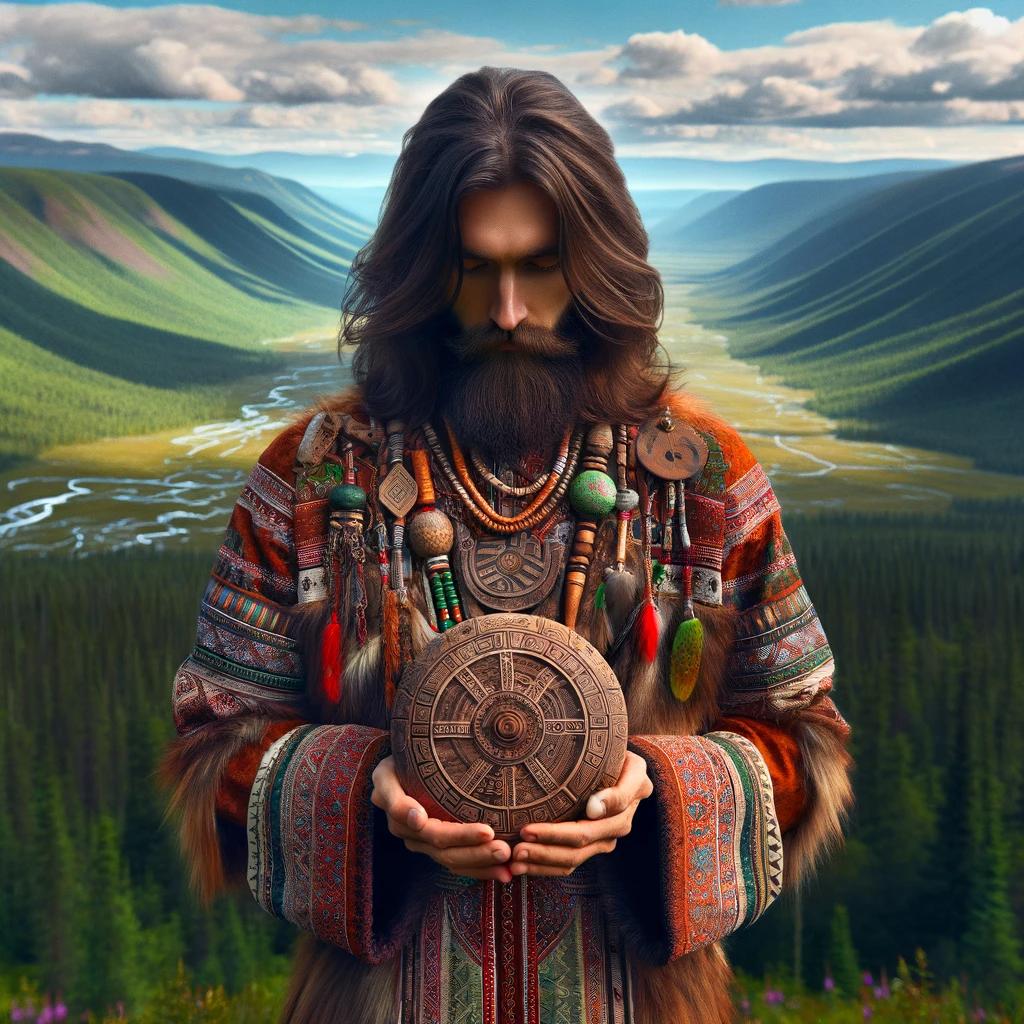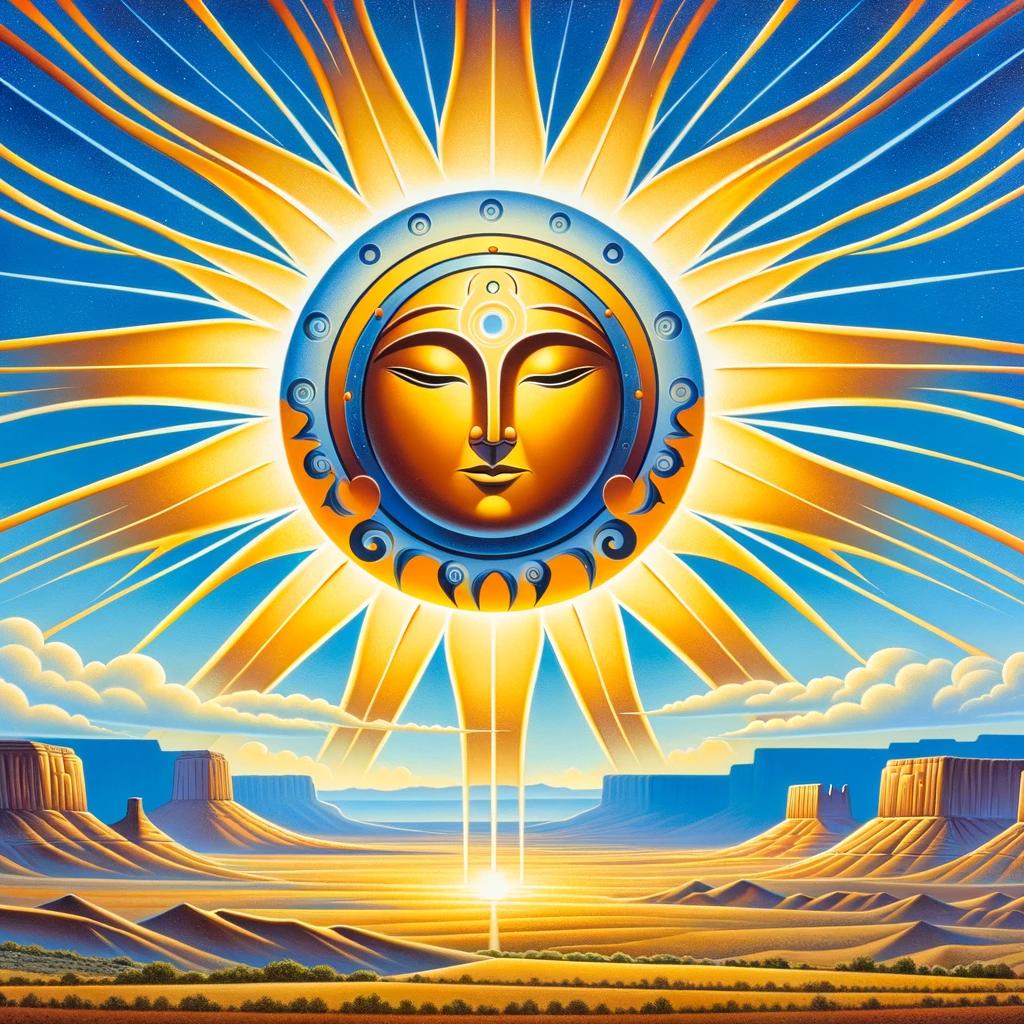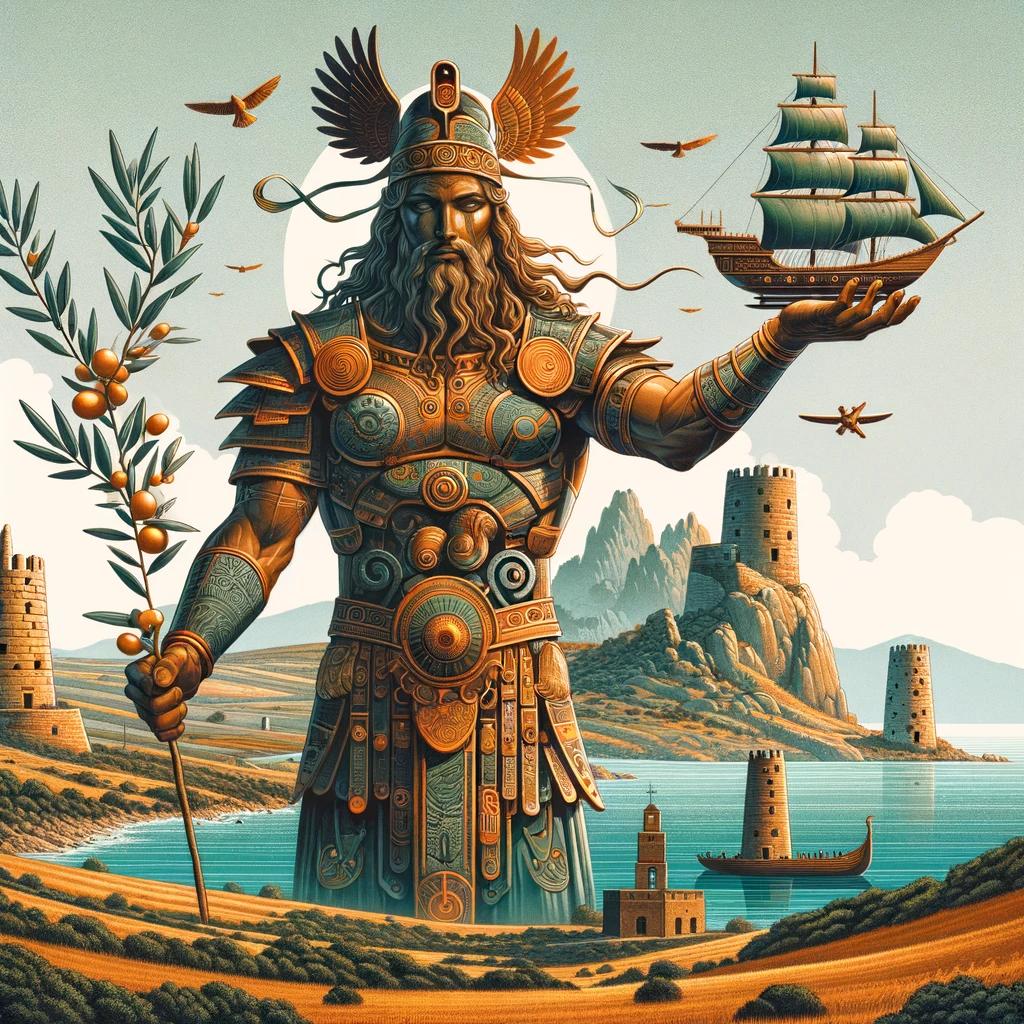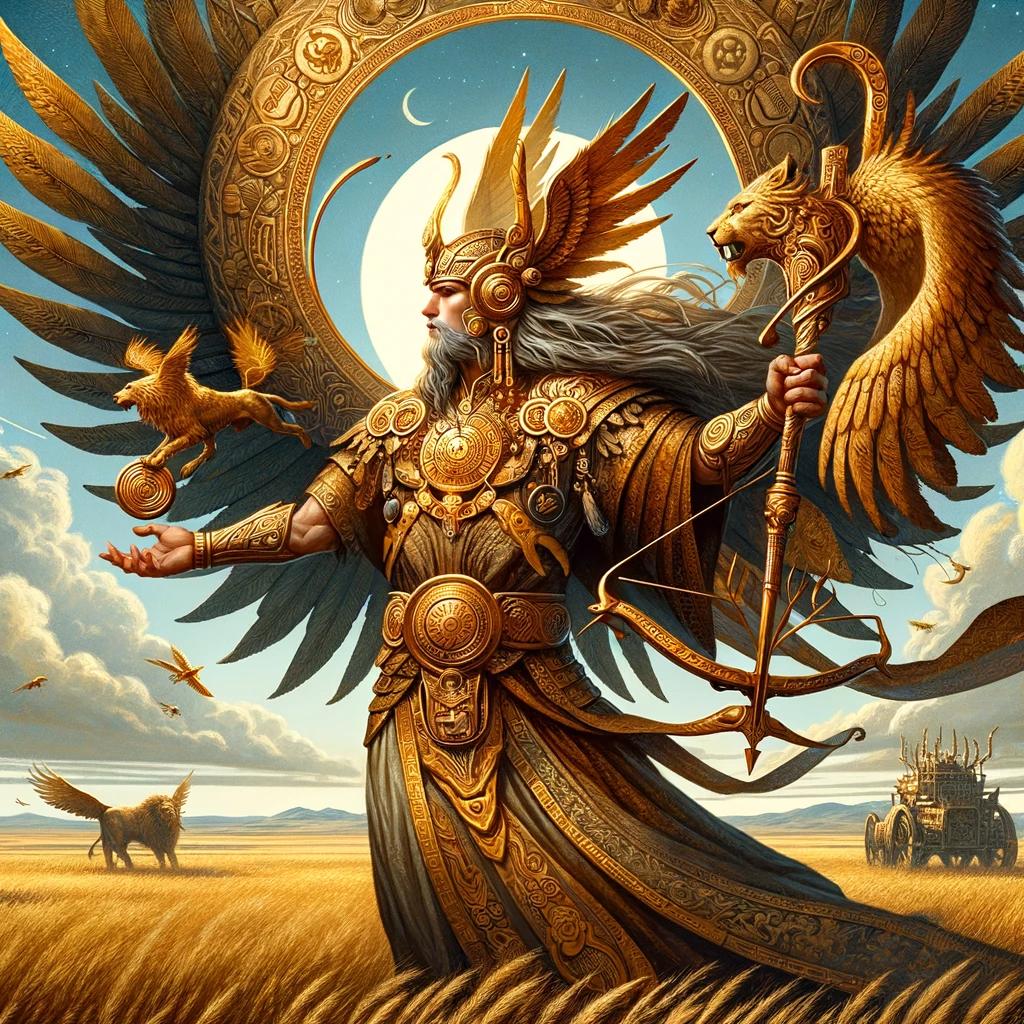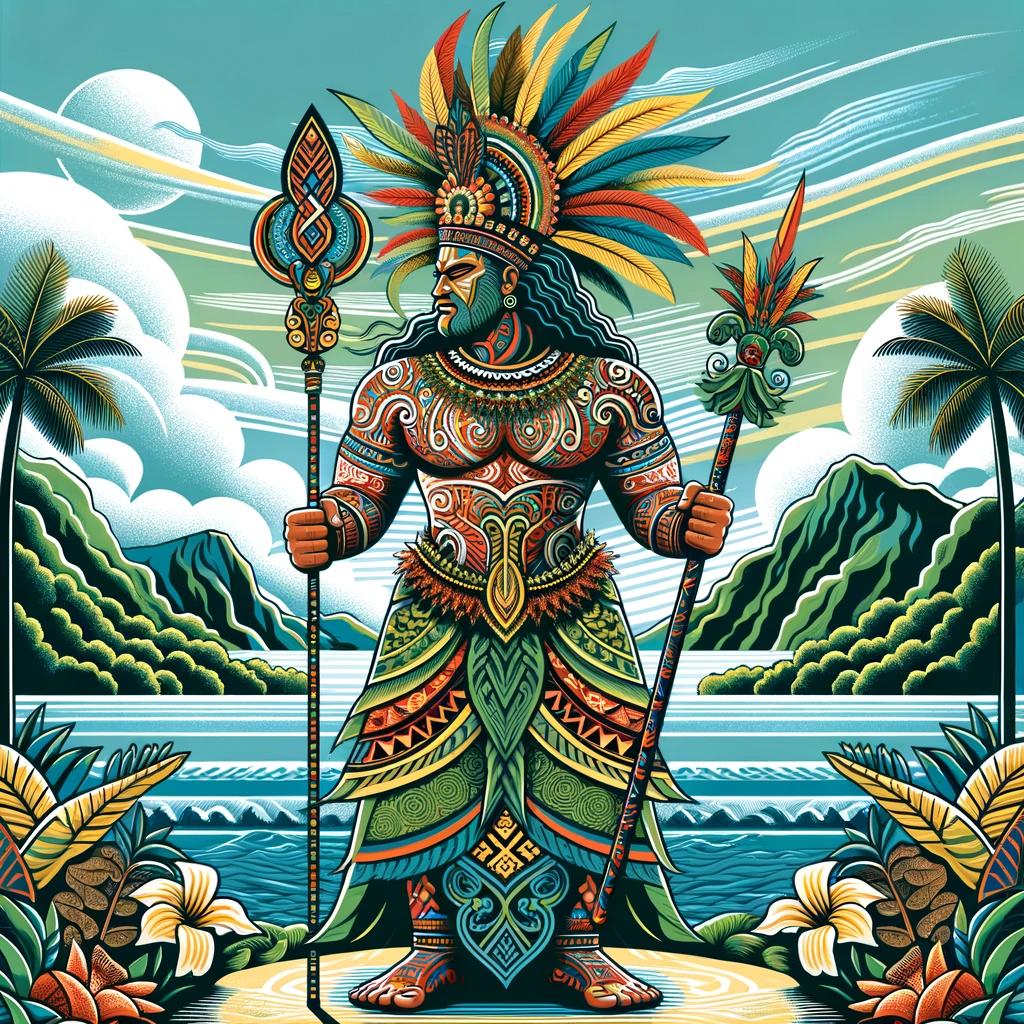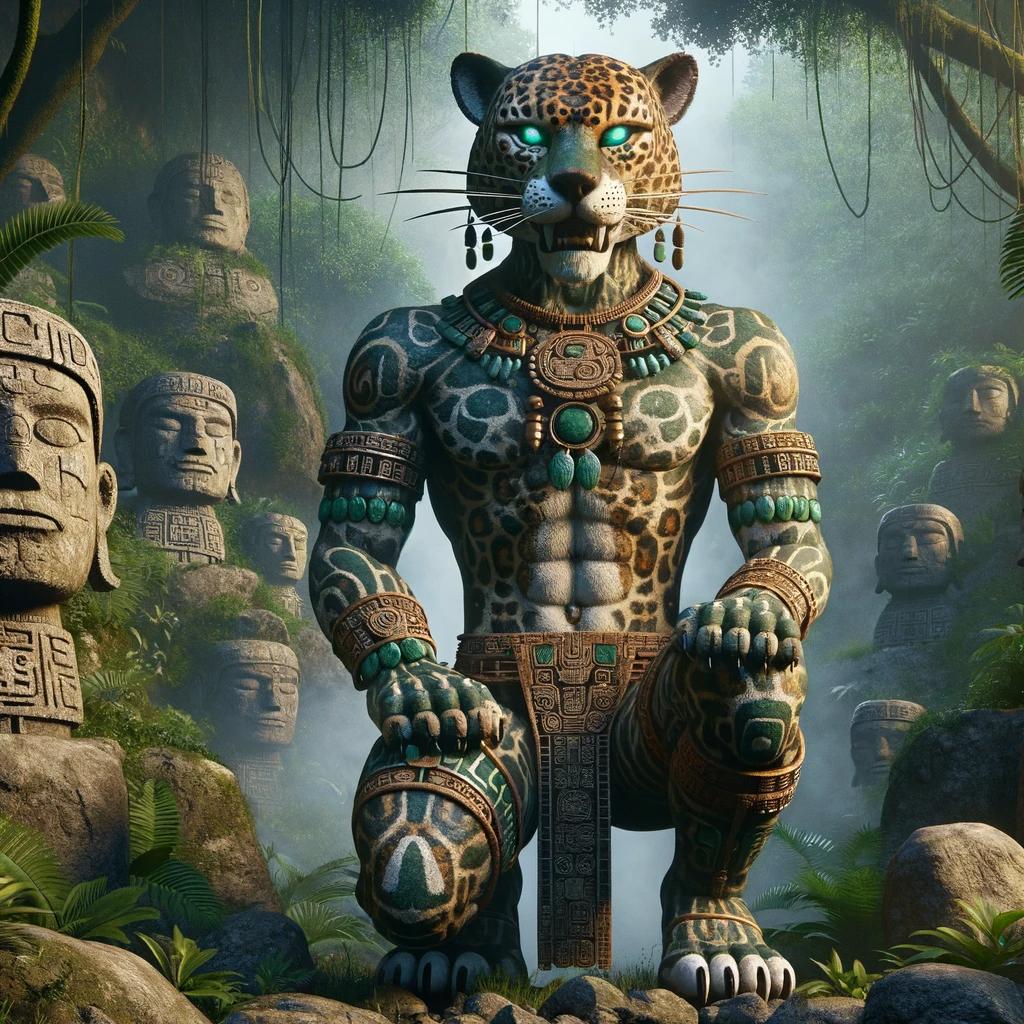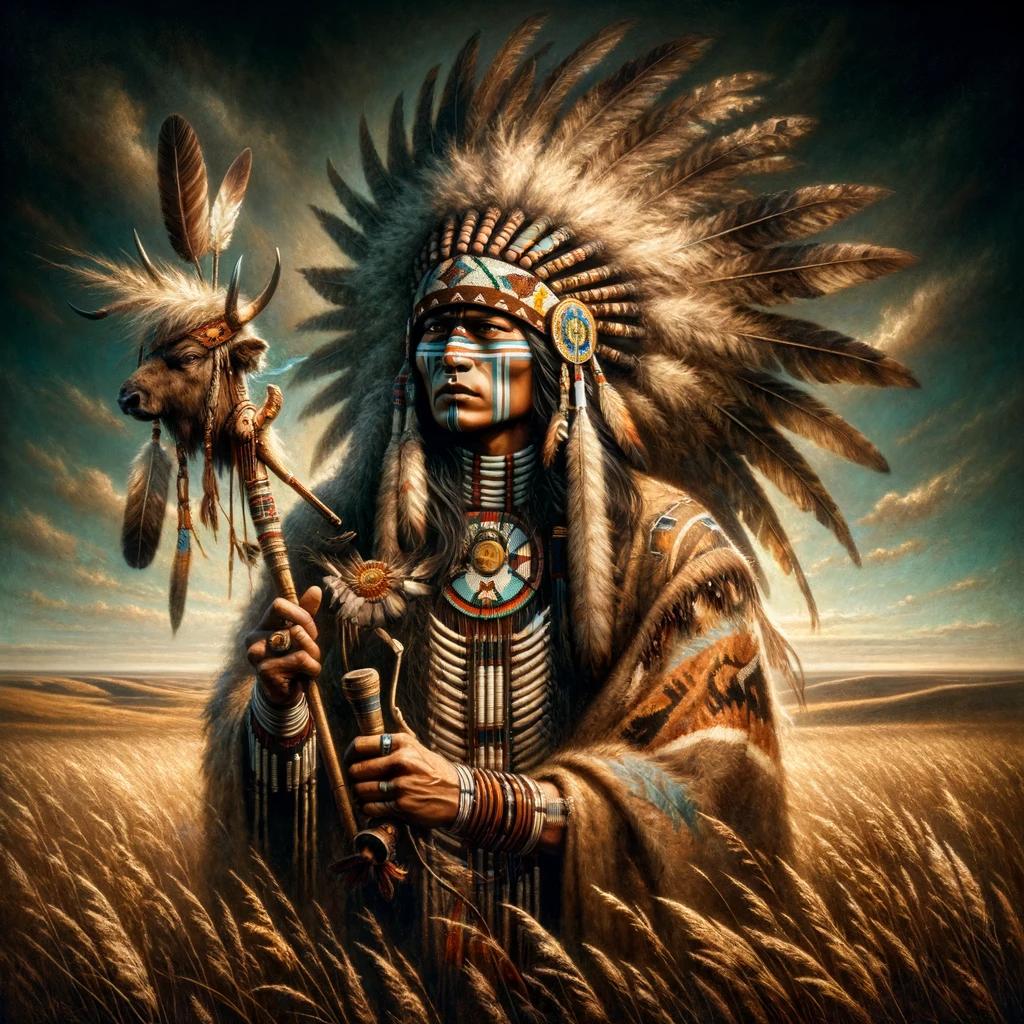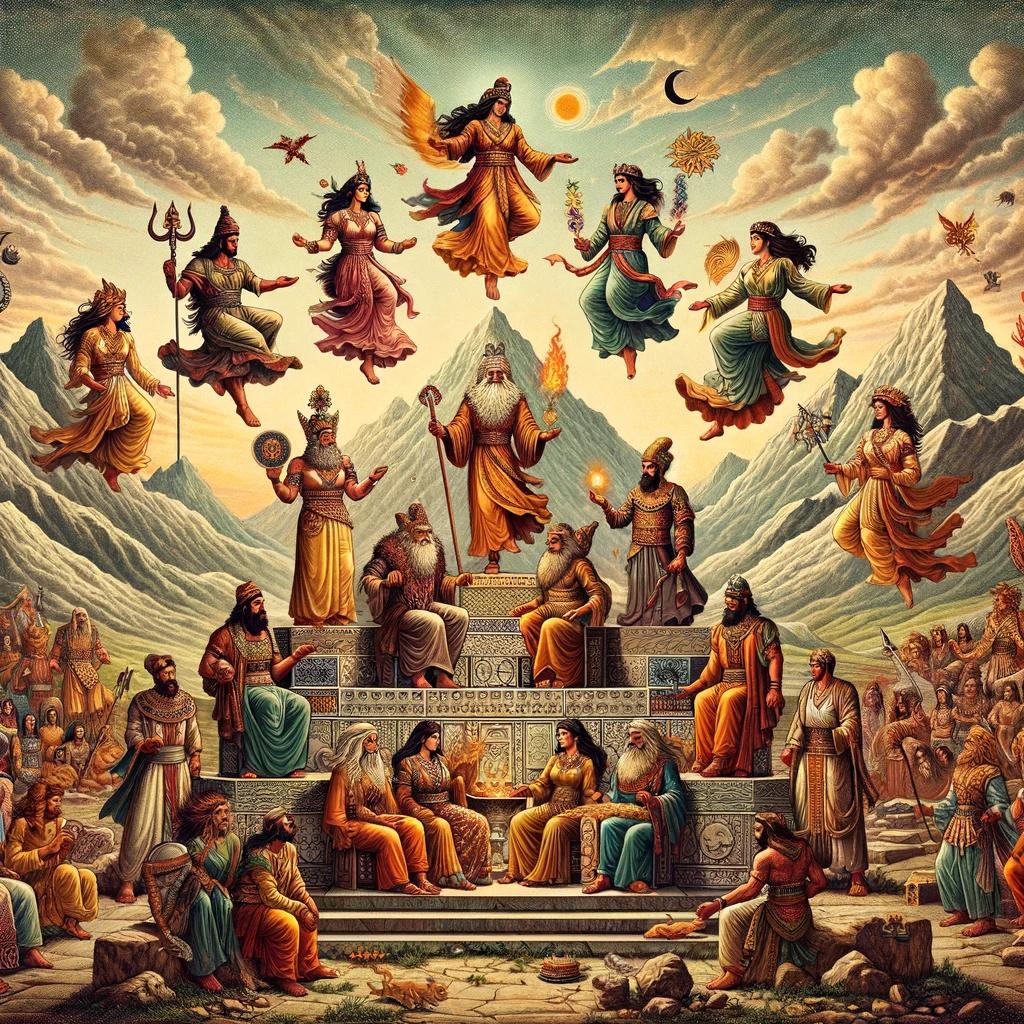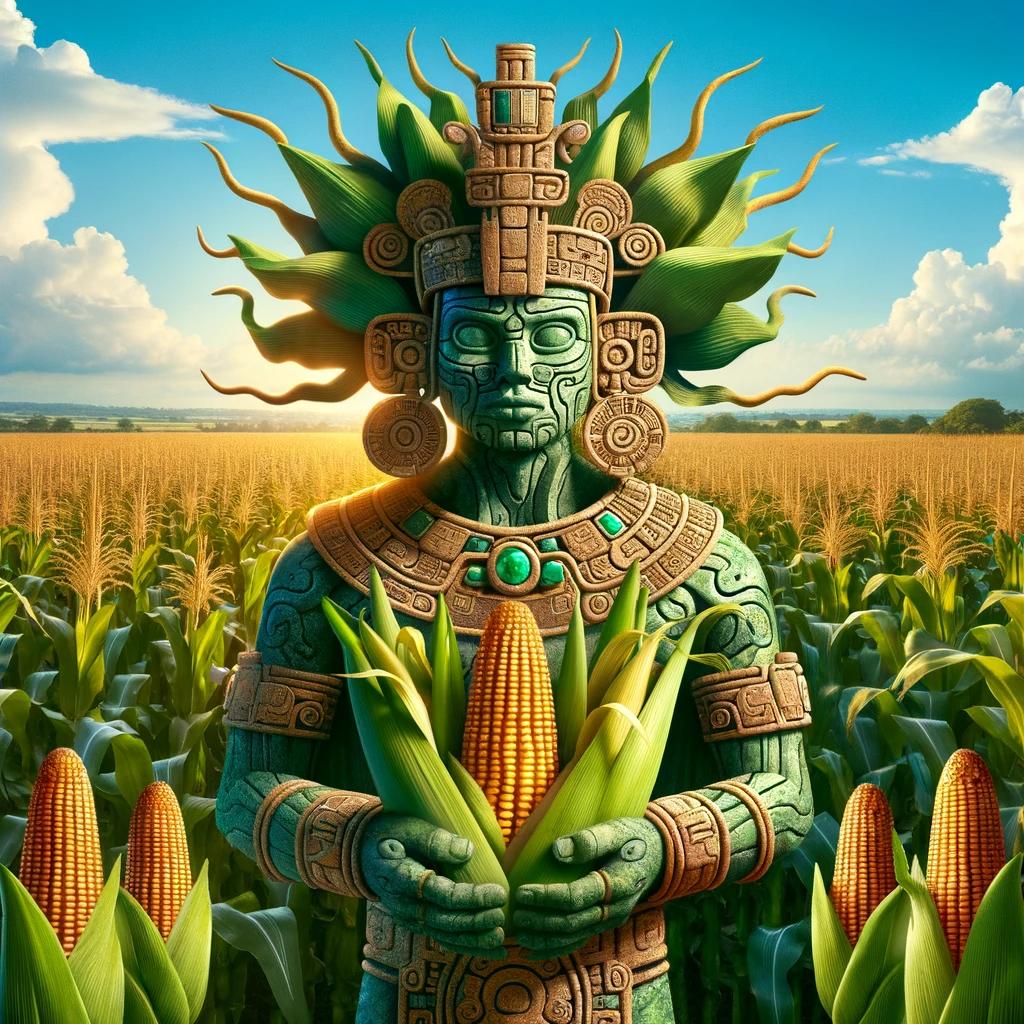Exploring Uralic Mythology: Unraveling the Mysteries of Ancient Finno-Ugric Beliefs
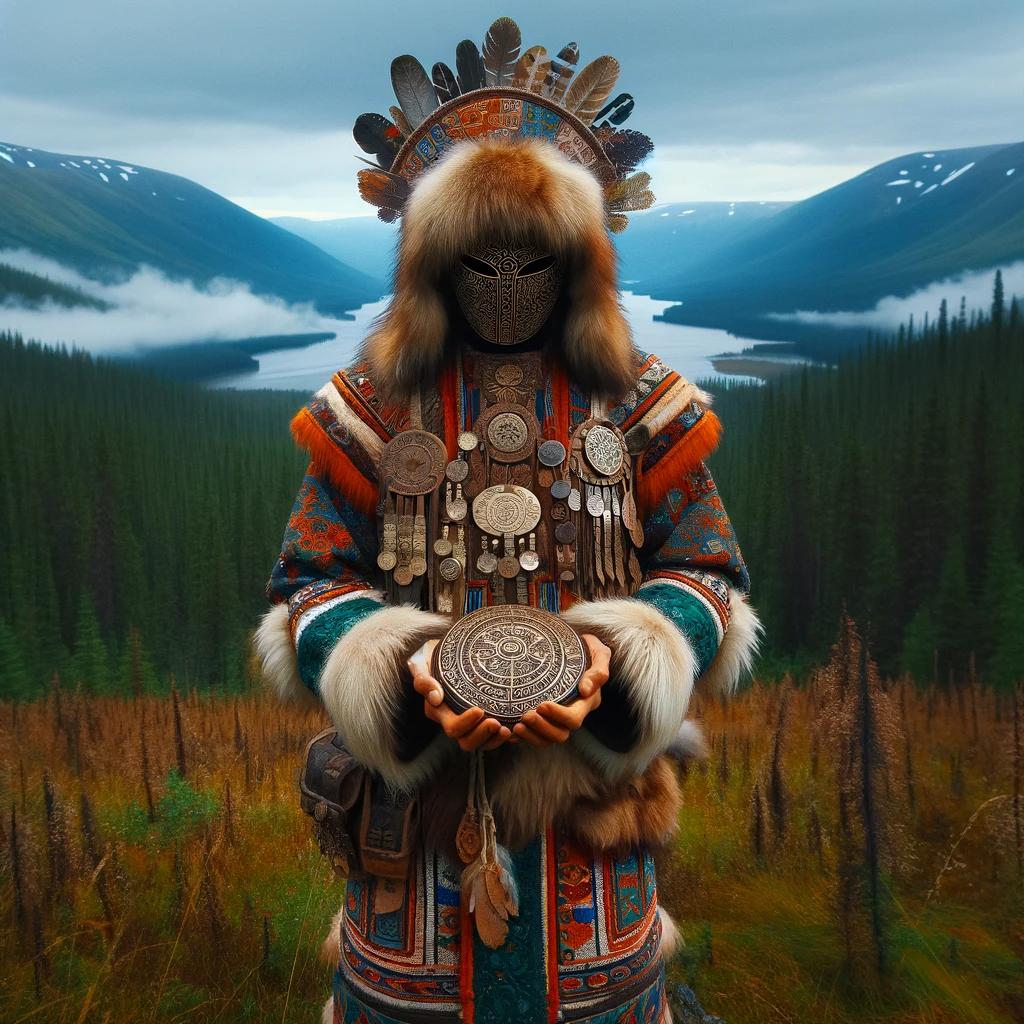
Uralic mythology, encompassing various peoples and traditions of the Ural Mountains and northern Scandinavia, is a rich and diverse subject. From Finnish and Estonian folklore to Sami religion and Komi mythological traditions, it offers insights into ancient beliefs and cultural significance.
This article explores the cosmology and creation myths, the presence of gods and goddesses, the influence of Indo-European elements, and the connections across different Uralic cultures. While examining the limitations and ongoing debates, it also delves into contemporary interpretations and the revival movements within Uralic mythology research.
Overview of Uralic Mythology
The realm of Uralic mythology unfolds a captivating tapestry of beliefs, legends, and traditions spanning across the Ural Mountains and northern Scandinavia. It encompasses various ethnic groups such as the Finns, Estonians, Sami, and Komis, each with their own distinct mythological heritage.
Uralic mythology offers profound insights into the cultural and spiritual fabric of these societies.
At its core, Uralic mythology explores creation myths, cosmology, and the divine beings that shaped the world according to the beliefs of these indigenous peoples.
It delves into the connection between humans and their environment, the significance of nature, and the roles of gods and goddesses in the cosmic order.
The mythology of Sami religion, for instance, unveils a rich tapestry of spiritual beliefs rooted in the Arctic landscapes of Norway, Sweden, Finland, and Russia.
Sami mythology encompasses deities, spirits, and legends that reflect their close relationship with their natural surroundings and their reliance on reindeer herding.
Shamanism holds a distinctive place in Uralic mythology, acting as a portal between the human and spirit realms.
Shamans, regarded as healers and spiritual intermediaries, practiced divination, soul journeying, and rituals to connect with supernatural forces.
The Komi people, indigenous to the northeastern regions of Europe, have their own unique mythological traditions.
They revere nature, worship ancestral spirits, and celebrate various deities associated with fertility, harvests, and protection.
Uralic mythology also showcases intriguing parallels and intersections with other indigenous belief systems. Comparisons with Indo-European elements shed light on shared themes, symbolism, and cultural intermixing.
By examining the distinctive mythology of Finland, we gain insights into the rich tapestry of Uralic folklore. Finnish mythology encompasses stories of ancient gods, heroes, and epic sagas that reflect their cultural identity.
Throughout Uralic mythology, a recurrent theme emerges – the reverence for the sky god. This celestial deity is often associated with creation, protection, and overarching divine authority.
Moreover, the exploration of the proto-Uralic language reveals intriguing connections between semantic elements and mythological vocabulary, enriching our understanding of ancient beliefs and cultural nuances.
Intricate mythological motifs can be traced across the Finno-Ugric languages, creating a vast network of shared narratives and symbolic structures.
This overview serves as a gateway into the fascinating realms of Uralic mythology, offering an invigorating exploration of its diverse aspects, symbolism, and cultural importance.
By delving into this profound tapestry of ancient beliefs, we gain a deeper understanding of the worldviews and traditions cherished by these remarkable indigenous peoples.
The Significance and Beliefs of Uralic Mythology
Uralic mythology holds great significance as it offers insights into the beliefs and cultural traditions of the Uralic peoples, who inhabit regions spanning from the Ural Mountains to northern Scandinavia.
The mythology plays a crucial role in understanding the worldview, spiritual practices, and cultural identity of these ancient communities.
At the core of Uralic mythology lies a rich collection of beliefs and narratives that explore the origin of the world, the creation of humans and gods, and the relationship between humans and the natural environment.
These mythological tales serve as a means to pass down ancestral knowledge, preserve cultural heritage, and instill a sense of identity and belonging within the Uralic communities.
Beliefs in Nature and Spiritual Beings
Uralic mythology is deeply rooted in the connection between humans and nature.
It encompasses the veneration of natural elements such as forests, lakes, rivers, and animals, reflecting the agricultural and nomadic lifestyles prevalent in these communities. In the belief system of the Uralic peoples, various spirits and deities are associated with different aspects of nature, including guardian spirits of the forest, water nymphs, and sky gods.
These spiritual beings are believed to govern and influence the natural world, and rituals and offerings are performed to seek their favor, protection, and guidance. Such practices highlight the close relationship between humans and the environment, emphasizing the importance of maintaining harmony and balance with nature.
Cosmology and Creation Myths
Uralic mythology features intricate cosmological concepts and creation myths that provide insights into how the world came into being and the origin of different celestial and earthly phenomena. Creation myths often involve divine beings shaping the world, the emergence of land and water, and the formation of celestial bodies.
These myths depict the struggles and interactions between gods and supernatural beings, showcasing the cultural values and moral lessons of the Uralic peoples. Creation narratives also play a significant role in explaining the origins of humans, their place in the cosmos, and their relationship with the spiritual realm.
Social and Cultural Significance
Uralic mythology is more than just a collection of ancient stories. It serves as a cultural compass, guiding the Uralic communities in their understanding of social structure, moral values, and interpersonal relationships.
Mythological tales often feature heroes and heroines, embodying virtues such as courage, wisdom, and resilience.
These stories provide cultural references and serve as a source of inspiration and guidance in navigating various life challenges and transitions.
The characters and motifs found within Uralic mythology continue to shape the artistic expressions, oral traditions, and celebrations of these communities, connecting past and present in a meaningful way.
In conclusion, Uralic mythology holds profound significance in the lives of the Uralic peoples, offering a window into their beliefs, values, and cultural heritage.
Exploring the rich tapestry of Uralic mythology provides valuable insights into the interconnectedness of humans, nature, and the spiritual realm as perceived by these ancient communities.
Exploring the Mythology of Sami Religion
The Sami people, also known as the Sámi or Saami, have a rich and distinct mythology that is an integral part of their cultural identity.
Sami mythology revolves around the belief in spirits, nature deities, and the interconnectedness of all living beings.
A central figure in Sami mythology is Beaivi, the Sun Goddess. According to their beliefs, Beaivi travels across the sky in a sleigh pulled by reindeer, bringing light and life to the world.
She is revered as the source of warmth, growth, and fertility.
The Sami also have a deep connection to the natural world and have a profound respect for the land, water, and wildlife.
They believe that every plant, animal, and element has a spirit and must be treated with reverence and gratitude. The sacred drum, known as a “joikku,” is used in rituals and ceremonies to communicate with the spirits and ancestors.
- The Tjielmayat
- The Máttaráhkká
- The Stállo
- The Ulda
The Sami people also have a strong shamanistic tradition, where the shamans, known as “noaidi” or “vadágan,” act as intermediaries between the spiritual and physical worlds.
They possess the ability to communicate with the spirits, perform healing rituals, and provide guidance to their community. Shamanic practices such as drumming, chanting, and trance states are used to access the spiritual realm.
The Sami mythology is deeply intertwined with their daily lives, influencing their traditions, customs, and relationship with the environment. It provides a spiritual framework that guides their interactions with nature, the community, and the cosmos.
Shamanism in Uralic Mythology and its Cultural Significance
Shamanism holds a prominent place in Uralic mythology, representing a significant aspect of the region’s cultural and spiritual practices. Shamans, known as “noaidi” in Sami tradition and “tietäjä” in Finnish folklore, are revered figures who bridge the physical and spiritual realms.
They possess the ability to communicate with spirits, perform healing rituals, and access divine knowledge.
In Uralic mythology, shamanism plays a vital role in maintaining harmony between humans, nature, and the supernatural.
Shamans act as intermediaries, liaising with ancestral spirits, nature spirits, and deities. Through divination, trance-induced journeys, and ecstatic rituals, shamans seek guidance, healing, and protection for their communities.
The cultural significance of shamanism extends beyond religious and spiritual practices.
Shamans also function as custodians of sacred knowledge, preserving tribal histories, social customs, and medicinal remedies. They are key figures in communal ceremonies, such as rituals for hunting success, agricultural fertility, and life-cycle transitions.
Furthermore, shamanism in Uralic mythology contributes to the perception of interconnectedness between humans, animals, plants, and the environment. It emphasizes the importance of respecting and harmonizing with the natural world, recognizing the spiritual essence in all living beings.
- Shamans serve as spiritual leaders and healers within their communities.
- They possess the ability to communicate with spirits and divine knowledge.
- Shamanic rituals and practices aim to maintain balance and harmony.
- Shamans preserve cultural traditions, histories, and medicinal remedies.
- Shamanism highlights the interconnectedness between humans and the natural world.
With its multifaceted role, shamanism remains a significant cultural force in Uralic mythology, providing a spiritual framework deeply rooted in the region’s indigenous beliefs.
The practices and traditions associated with shamanism continue to be upheld and respected, contributing to the cultural diversity and richness of the Uralic peoples.
Understanding the Komi People and their Mythological Traditions
The Komi people, also known as the Zyrian, are an indigenous Uralic ethnic group residing in the northern parts of Russia.
They have a rich cultural heritage, including unique mythological traditions that provide insights into their worldview and beliefs.
In Komi mythology, the natural world holds great significance. The Komi people have deep reverence for nature, viewing it as a sacred entity that is intricately connected to their daily lives.
They believe in spirits inhabiting various elements of nature, such as forests, rivers, and mountains. These spirits, known as “siylas,” are not only guardians of these natural features but also play a vital role in the harmony and balance of the Komi people’s existence.
One key figure in Komi mythology is the Supreme God, called “Jumo.” Jumo is depicted as a wise and powerful deity who governs over all aspects of life, including creation, fertility, and the cycle of seasons.
The Komi people believe that Jumo is responsible for overseeing the order and balance of the universe.
Another significant element in Komi mythology is the belief in ancestral spirits and their influence on the living.
The Komi people honor their ancestors and believe that they continue to exist in the spiritual realm. They seek guidance and protection from their ancestors through rituals and ceremonies, which are deeply rooted in their cultural practices.
Mythological motifs in Komi folklore often revolve around the struggles and triumphs of heroes who face various challenges and embark on epic journeys. These stories serve as sources of inspiration and moral teachings for the Komi people, emphasizing values such as bravery, resilience, and the importance of community.
The preservation of Komi mythological traditions has faced challenges throughout history, particularly during periods of cultural assimilation and religious conversions. However, there have been efforts in recent years to revitalize and promote Komi cultural heritage, including mythological traditions, through educational programs, cultural events, and the documentation of oral histories.
Understanding the mythological traditions of the Komi people provides valuable insights into their cultural identity, worldview, and connection to the natural world. These traditions continue to shape and enrich the lives of the Komi community, serving as a testament to their enduring cultural heritage.
Comparisons between Uralic Mythology and Other Indigenous Belief Systems
Uralic mythology, with its diverse range of folklore and ancient beliefs, offers intriguing parallels and comparisons to other indigenous belief systems around the world. By examining these connections, we can gain a deeper understanding of the cultural significance and universal themes that resonate across different mythologies.
One notable comparison is found in the similarities between Uralic mythology and the mythologies of Native American tribes. Both belief systems emphasize a strong connection with nature and the spiritual significance of animals.
In Uralic mythology, animals often hold sacred roles and are considered guardians and spirit guides. This concept reflects the deep reverence for animals found in Native American mythologies, where animals are seen as messengers of the divine.
- Similarities between Uralic mythology and the mythologies of Native American tribes include:
- The importance of animal symbolism and animal spirits
- A focus on nature as a source of spirituality
- Rituals and ceremonies to honor the elements and natural forces
Another intriguing comparison can be drawn between Uralic mythology and the indigenous belief systems of Africa.
Both share a profound connection with animism, the belief that all things have spirits and are interconnected. In Uralic mythology, this belief manifests in the notion that natural phenomena such as trees, rivers, and mountains possess spiritual essences.
Similarly, African indigenous belief systems emphasize the spiritual presence and sacredness of the natural world.
- Common elements between Uralic mythology and African indigenous belief systems include:
- Belief in the spiritual essence of natural phenomena
- The existence of ancestral spirits and reverence for ancestors
- Rituals and ceremonies to maintain harmony with the spiritual realm
Exploring these connections between Uralic mythology and other indigenous belief systems allows us to recognize the universality of human experiences and the remarkable similarities that exist across diverse cultures.
It presents an opportunity to appreciate the interconnectedness of humanity and the ways in which ancient mythologies continue to shape our understanding of the world today.
The Influence of Indo-European Elements in Uralic Mythology
Uralic mythology, while predominantly rooted in the Finno-Ugric language family, also exhibits intriguing influences from Indo-European elements.
These influences reflect the historical interactions and cultural exchanges between Uralic and Indo-European-speaking peoples.
One notable area of influence is the intertwining of deities and mythical narratives. In some cases, Uralic mythological figures have assumed attributes and roles similar to Indo-European gods and goddesses.
For instance, parallels can be drawn between the Finnish god Ukko, associated with thunder and sky, and the Indo-European deity Thor, who also embodies thunder and divine power.
In addition to deity assimilation, Indo-European influences can be observed in recurring mythological motifs.
Shared themes, such as the creation of the world or heroic quests, transcend linguistic boundaries and find expression in both Uralic and Indo-European mythologies. These similarities suggest that ancient cultural exchanges played a significant role in shaping common narrative patterns.
Another notable aspect is the linguistic impact of Indo-European languages on Uralic mythological vocabulary. Words and concepts related to cosmology, divine beings, and religious rituals often display Indo-European loanwords or adaptations.
This linguistic borrowing highlights the prolonged contact and influence between Uralic and Indo-European communities, emphasizing the interconnectedness of their mythological traditions.
However, it is essential to approach these influences with caution, as there is ongoing debate and scholarly scrutiny surrounding the extent and nature of Indo-European elements in Uralic mythology.
Some argue for the existence of syncretism and shared cultural symbolism, while others emphasize the independent evolution of Uralic mythological beliefs.
Exploring the influence of Indo-European elements in Uralic mythology provides valuable insights into the complex cultural interactions and dynamic nature of mythological transmission.
It demonstrates the multifaceted nature of Uralic mythology and underscores the interplay between different linguistic and cultural groups throughout history.
The Role of Finnish Mythology in Uralic Folklore
Finnish mythology plays a significant role in the rich tapestry of Uralic folklore, offering unique insights into the beliefs and traditions of the Finnish people. Embedded within this mythology are stories of gods, heroes, and mythical creatures that have shaped the cultural identity of the Finno-Ugric communities.
Central to Finnish mythology is the pantheon of deities. One prominent figure is Ukko, the god of thunder and the sky, revered as the ruler of all gods. Ukko is associated with weather phenomena and seen as a powerful force, capable of bringing both prosperity and destruction.
Another important deity is Tapio, the forest god, who is revered for his connection to nature, forests, and animals.
The Finnish folklore also features legendary heroes like Väinämöinen, a wise and powerful sorcerer, and Lemminkäinen, a skilled warrior known for his adventures and romantic escapades.
These mythical heroes embody the values and ideals of the Finnish people, representing bravery, wisdom, and resilience.
In addition to gods and heroes, Finnish mythology showcases various mythical creatures that add depth and enchantment to the folklore.
For instance, the mystical Sampo, a magical artifact, symbolizes prosperity and abundance. Creatures like the Louhi, a powerful witch, and the Louhi’s daughter, the beautiful and compassionate Maiden of Pohjola, also feature prominently in Finnish myths.
Furthermore, Finnish mythology often intertwines with nature deities, emphasizing the close relationship between the Finnish people and the natural world. These beliefs depict the profound connection Finno-Ugric communities have with their surroundings, fostering a deep respect and reverence for nature.
Through its stories and legends, Finnish mythology not only entertains but also imparts essential lessons and values to the Finno-Ugric people. It serves as a cultural compass, offering guidance and inspiration, as well as providing a sense of collective identity and heritage.
Connection Between the Sky God and Uralic Mythology
The concept of a Sky God is a recurring theme in Uralic mythology, representing the divine presence associated with the heavens. Across various Uralic cultures, including Finnish, Estonian, and Sami, the Sky God holds significant importance and is often considered a creator deity and a source of cosmic order.
In Uralic mythological traditions, the Sky God is depicted as a powerful figure who governs various aspects of the natural world. They are believed to oversee celestial bodies, weather patterns, and the overall balance of the universe.
The Sky God is often associated with fertility, protection, and divine guidance.
In Finnish mythology, the Sky God is known as Ukko, who is depicted as an elderly deity with a long white beard, residing in the realm of the heavens.
Ukko is revered as the ruler of the skies and is associated with thunder, lightning, and rain. As the supreme deity, Ukko holds the power to bring prosperity or create chaos in the mortal realm.
Similarly, the Sami people worship the Sky God, called Bieggolmai or Radien-Áddjá, who embodies the cosmic forces and maintains harmony between the spiritual and physical realms. Bieggolmai is seen as a benevolent deity who provides protection, abundance, and spiritual guidance to the Sami community.
Through the connection between the Sky God and Uralic mythology, we see the reverence shown toward celestial powers and the acknowledgment of the divine presence in the natural world. The Sky God serves as a bridge between the realms of mortals and gods, influencing the lives and belief systems of the Uralic peoples.
Exploring the Proto-Uralic Language and its Mythological Vocabulary
The Proto-Uralic language plays a significant role in understanding the mythological vocabulary present in Uralic mythology. This ancient language, reconstructed by linguists, is believed to have originated thousands of years ago and provided the foundation for the diverse Uralic languages spoken by various indigenous peoples.
By examining the Proto-Uralic language, researchers gain insights into the mythological concepts and symbols that were vital to these ancient cultures. The vocabulary reveals the beliefs and values of the peoples who practiced Uralic mythology, their understanding of nature, cosmology, and the supernatural.
Proto-Uralic Lexicon
- The lexicon of the Proto-Uralic language provides a glimpse into the religious and spiritual aspects of Uralic societies. It includes words related to deities, spirits, natural phenomena, rituals, and mythical creatures.
- Through comparative analysis with contemporary Uralic languages, linguists can identify shared mythological terms and trace their evolution across different groups.
- Elements such as the sun, moon, stars, forests, animals, and celestial bodies appear prominently in the Proto-Uralic lexicon, reflecting the importance of these entities in the mythological narratives.
Mythological Vocabulary and Cultural Significance
The mythological vocabulary present in the Proto-Uralic language sheds light on the cultural significance of certain concepts and symbols.
Words related to creation, fertility, harvest, protection, and the afterlife demonstrate the deep connection between mythological beliefs and everyday life.
Additionally, the vocabulary offers clues about the spiritual practices and rituals that were integral to Uralic societies.
It reveals the importance of shamanism and the role of shamans as intermediaries between the human and spirit worlds.
Continued Research and Interpretation
Researchers continue to delve into the mythological vocabulary of the Proto-Uralic language, refining interpretations and seeking to uncover more about the intricacies of Uralic mythology.
By studying the mythological vocabulary and tracing its connections to cultural practices, researchers gain a deeper understanding of the beliefs, values, and worldview of ancient Uralic peoples.
This knowledge contributes to the preservation and appreciation of Uralic mythology in the present day.
Mythological Motifs in Finno-Ugric Languages
Finno-Ugric languages encompass a wide range of mythical motifs that reveal the deep-rooted beliefs and cultural heritage of the Uralic peoples. These motifs play a significant role in shaping the mythological narratives and symbolism found within the folklore of various Finno-Ugric communities.
- Nature Spirits: The Finno-Ugric mythological traditions are rich with nature spirits, including forest spirits, water spirits, and household spirits. These spirits are often depicted as guardians or protectors of their respective domains, and their interactions with humans are a recurring motif in Finno-Ugric folklore.
- Animals as Mythological Figures: Animals hold a prominent place in Finno-Ugric mythology, often featuring as mythical beings or sacred creatures.
The bear, in particular, is highly revered and symbolizes strength, courage, and spirituality in many Finno-Ugric cultures.
- Creation Stories: Finno-Ugric mythology includes various creation stories that explain the origins of the world, nature, and humankind.
These stories often involve mythical beings or deities shaping the elements of the cosmos and giving birth to the first humans.
- Magical Objects and Artifacts: Many Finno-Ugric myths feature magical objects or artifacts with special powers.
These objects may serve as tools for heroes or play a role in pivotal events within the mythological narratives.
- Heroic Figures and Quests: Finno-Ugric mythology showcases heroic figures who embark on quests or face challenges to protect their communities or obtain valuable treasures.
These stories often emphasize bravery, perseverance, and the triumph of good over evil.
- Mythical Creatures: The rich tapestry of Finno-Ugric mythology includes a wide array of mythical creatures. These creatures range from benevolent spirits and helpful deities to malevolent beings or monsters that pose threats to humans.
Throughout Finno-Ugric languages, these mythological motifs are interwoven, shaping the cultural identity and customs of the Uralic peoples.
Exploring these motifs provides valuable insights into the worldview, values, and ancestral connections of the Finno-Ugric communities.
Examining Uralic Mythology Across Cultures
Uralic mythology exhibits fascinating variations and similarities across different cultures, offering valuable insights into the belief systems of various Uralic peoples. By exploring the mythological traditions of different Uralic groups, we can unravel the diverse cultural tapestry woven within this ancient mythology.
Sami Culture: The Sami people, with their distinct traditions and practices, possess a unique mythological framework. Their mythology reflects a deep connection with nature and the spiritual significance of their environment.
The Sami tales often revolve around oral storytelling and incorporate elements of animism, shamanism, and spirits associated with the natural world.
Komi Mythological Traditions: The Komi people, hailing from the Komi Republic in Russia, have a rich mythological heritage passed down through generations.
Their myths often depict interactions between humans, gods, and spirits, showcasing a complex relationship between the mortal and divine realms. These stories shed light on the Komi people’s cultural identity and worldview.
Cultural Exchange: Uralic mythology has also witnessed significant cultural exchange and influences from neighboring indigenous groups. Interactions with the neighboring Baltic and Slavic cultures, for example, have led to the assimilation of certain mythological motifs and deities into Uralic belief systems.
Exploring these intercultural interactions provides a deeper understanding of the dynamic nature of Uralic mythology.
Linguistic Influence: One fascinating aspect of Uralic mythology is the influence of the Proto-Uralic language on various Finno-Ugric folklore.
The linguistic connections highlight shared mythological themes and motifs across different Uralic-speaking communities, emphasizing the unity of these cultures in their ancient beliefs.
Symbolism and Imagery: Symbolism and imagery play a crucial role in Uralic mythology across cultures.
Sacred animals, celestial bodies, natural elements, and mythical creatures often serve as powerful symbols in stories and rituals. Analyzing these symbols deepens our understanding of the cultural, spiritual, and ecological significance attributed to them.
Contemporary Perspectives: In recent years, there has been a renewed interest in Uralic mythology and its cultural revival. Artists, scholars, and communities are exploring and reinterpreting these ancient beliefs through various mediums, including literature, visual arts, and performances.
These contemporary perspectives provide fresh insights into the enduring relevance and adaptability of Uralic mythology in today’s world.
Examining Uralic mythology across cultures unearths a treasure trove of stories, beliefs, and cultural connections.
By delving into the mythological traditions of different Uralic groups, we can appreciate the diversity and richness of this ancient lore, fostering an appreciation for the cultural heritage and wisdom embedded within Uralic mythology.
Contemporary Interpretations and Revival Movements in Uralic Mythology
As we delve into contemporary interpretations and revival movements in Uralic mythology, it becomes evident that these ancient belief systems continue to intrigue and inspire individuals in the modern world.
Despite facing significant challenges due to cultural assimilation and historical disruptions, there has been a recent resurgence of interest in reviving and understanding Uralic mythological traditions.
One notable aspect of contemporary interpretations is the scholarly exploration and reinterpretation of Uralic mythological motifs and narratives. Researchers and academics are reexamining the existing sources and revisiting oral traditions and written records to shed new light on the meanings and significance of these myths.
Through comparative studies and interdisciplinary approaches, they aim to understand the underlying cultural and societal context of Uralic mythology.
Moreover, contemporary reinterpretations have opened up avenues for exploring the connections and similarities between Uralic mythology and other indigenous belief systems. By examining shared motifs, symbols, and cosmological concepts, scholars seek to identify possible cultural exchanges or cross-influences between different ethnic groups.
In parallel to the scholarly endeavors, there has been a growing interest among Uralic communities and individuals in reclaiming and preserving their mythological heritage. Revival movements, cultural organizations, and community initiatives have emerged to celebrate and propagate Uralic mythology and its cultural significance.
These revival movements take various forms, ranging from organized festivals and cultural events to educational programs and artistic expressions. By immersing themselves in the myths and rituals, individuals strive to reconnect with their ancestral traditions, fostering a sense of cultural pride and identity.
Additionally, these efforts provide platforms for intergenerational knowledge transmission, ensuring that Uralic mythology continues to be passed down to future generations.
In summary, contemporary interpretations and revival movements play a crucial role in reviving and promoting Uralic mythology. They offer insights into the intricate tapestry of beliefs, customs, and narratives that have shaped the identities of Uralic peoples.
By exploring new perspectives and celebrating their mythological heritage, these initiatives contribute to the preservation and appreciation of Uralic cultures in the present day.
Limitations and Debates surrounding Uralic Mythology Research
As with any field of study and research, Uralic mythology research also has its limitations and ongoing debates.
These considerations shed light on the challenges researchers face while exploring and interpreting the rich mythological traditions of the Uralic peoples.
Cultural and Linguistic Diversity
One of the key challenges in Uralic mythology research is the vast cultural and linguistic diversity within the Uralic language family. Each Uralic group has its own unique mythological traditions and beliefs, making it difficult to generalize and draw broad conclusions.
Researchers must navigate through various cultural nuances and linguistic differences to gain a comprehensive understanding of Uralic mythologies.
Limited Historical Documentation
Another challenge lies in the limited historical documentation available for the Uralic peoples, especially in comparison to other mythological traditions. Many of the Uralic mythologies have a strong oral tradition, which can make it challenging to trace their origins and evolution over time.
This lack of written records requires researchers to rely on fragments of myths, folklore, and archaeological evidence, leading to potential gaps and uncertainties in the understanding of Uralic mythologies.
Interactions and Influences
The Uralic peoples have historically interacted with neighboring cultures, such as Indo-European and Turkic groups, leading to complex interactions and influences on their mythological beliefs.
Sorting out the original Uralic elements from these external influences poses a significant challenge to researchers. It requires careful comparative analysis and the consideration of historical context to differentiate between indigenous Uralic mythological motifs and those adopted or adapted from other cultures.
Interpretation and Reconstruction
Interpreting and reconstructing Uralic mythologies from fragmentary sources and limited historical records is a subject of ongoing debate. Researchers must carefully analyze and interpret available materials, often relying on comparative mythology, linguistic analysis, and cross-cultural studies.
The diverse interpretations and theories surrounding Uralic mythologies contribute to a dynamic and evolving field of research.
Indigenous Perspectives and Revival Movements
Another aspect of debate in Uralic mythology research is the consideration of indigenous perspectives and contemporary revival movements. With the resurgence of interest in preserving and revitalizing Uralic cultural heritage, researchers must engage with modern indigenous communities and respect their perspectives on the interpretation and representation of Uralic mythologies.
In conclusion, while Uralic mythology research offers profound insights into the ancient beliefs and traditions of the Uralic peoples, it is essential to acknowledge the limitations and ongoing debates within the field.
Recognizing the challenges of cultural diversity, limited historical documentation, interactions and influences, interpretation and reconstruction, and indigenous perspectives contributes to a more nuanced understanding of Uralic mythologies and their significance in the broader mythological landscape.
.











